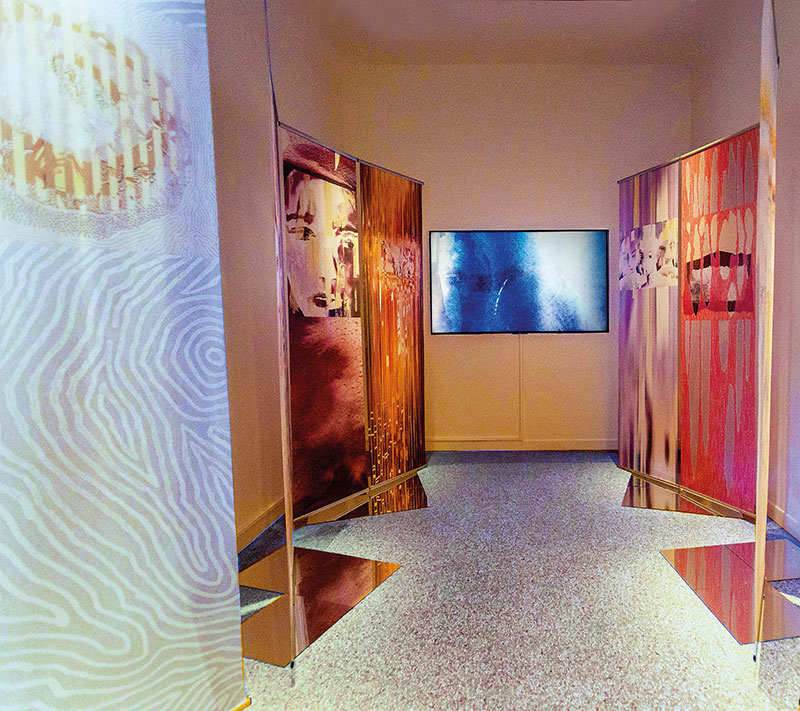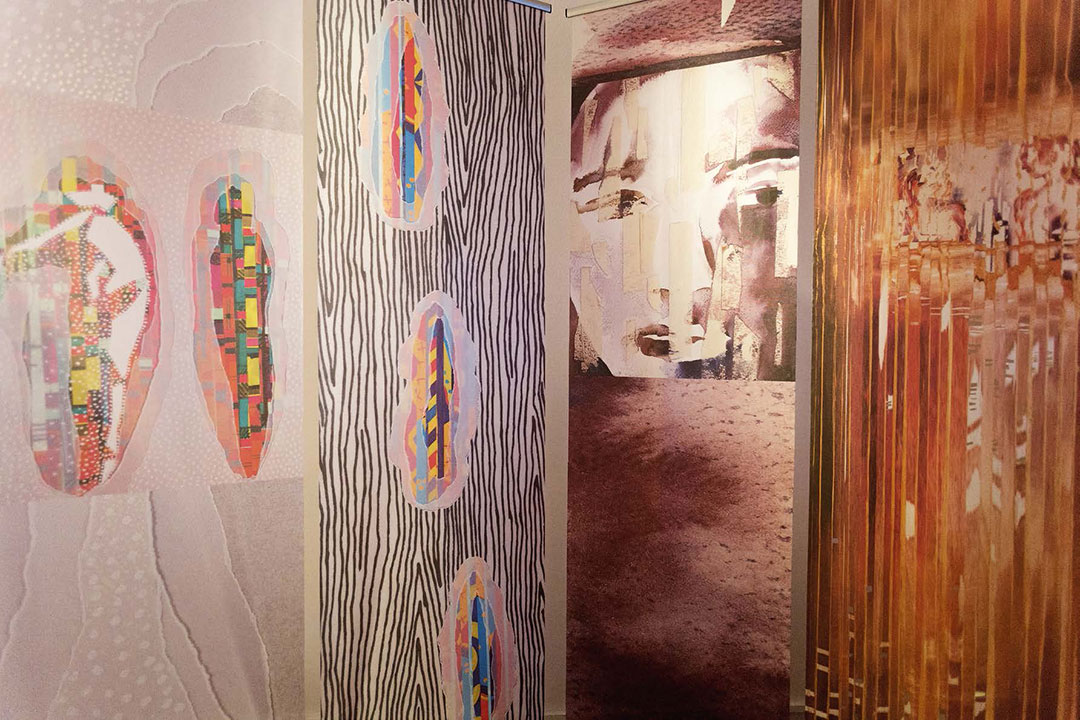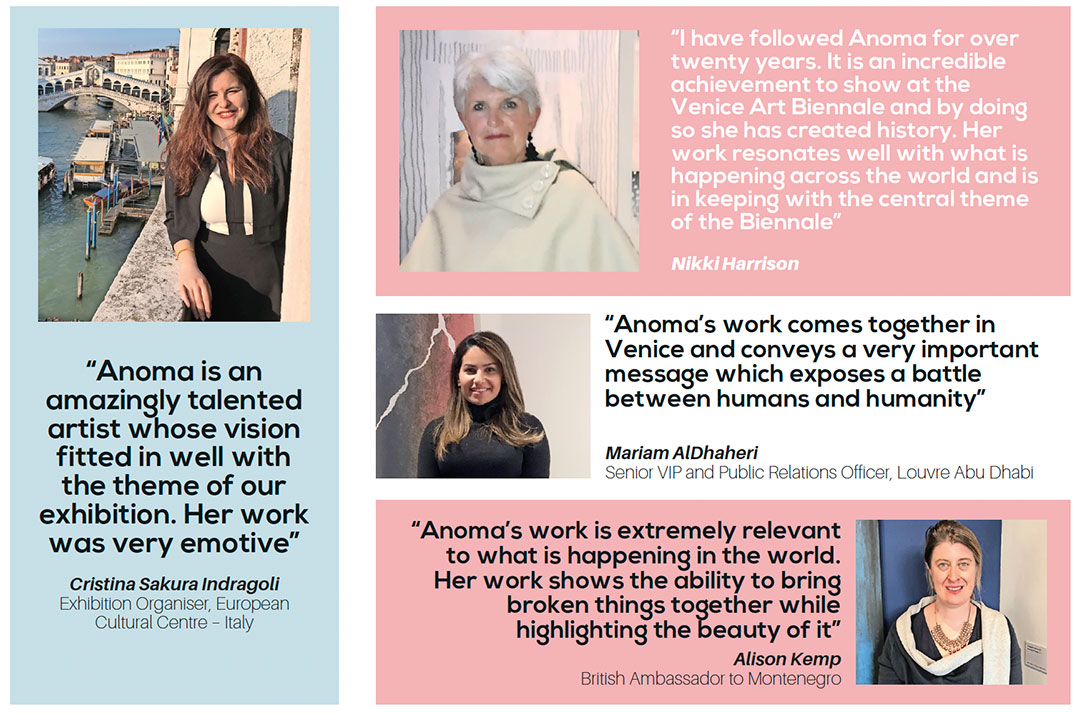
Painting Unity Within Diversity
Article by Hi Magazine
Artist Anoma Wijewardene made history by becoming the first Sri Lankan artist since the 43 group to showcase her work at the prestigious 58th Venice Art Biennale 2019. Her highly acclaimed work exhibited at Personal Structures: Identities, a collateral exhibition held at the Palazzo Bembo has put Sri Lanka on the global art scene. A graduate of Central Saint Martins, London her work has graced the cover of Vogue magazine and been exhibited in galleries worldwide.
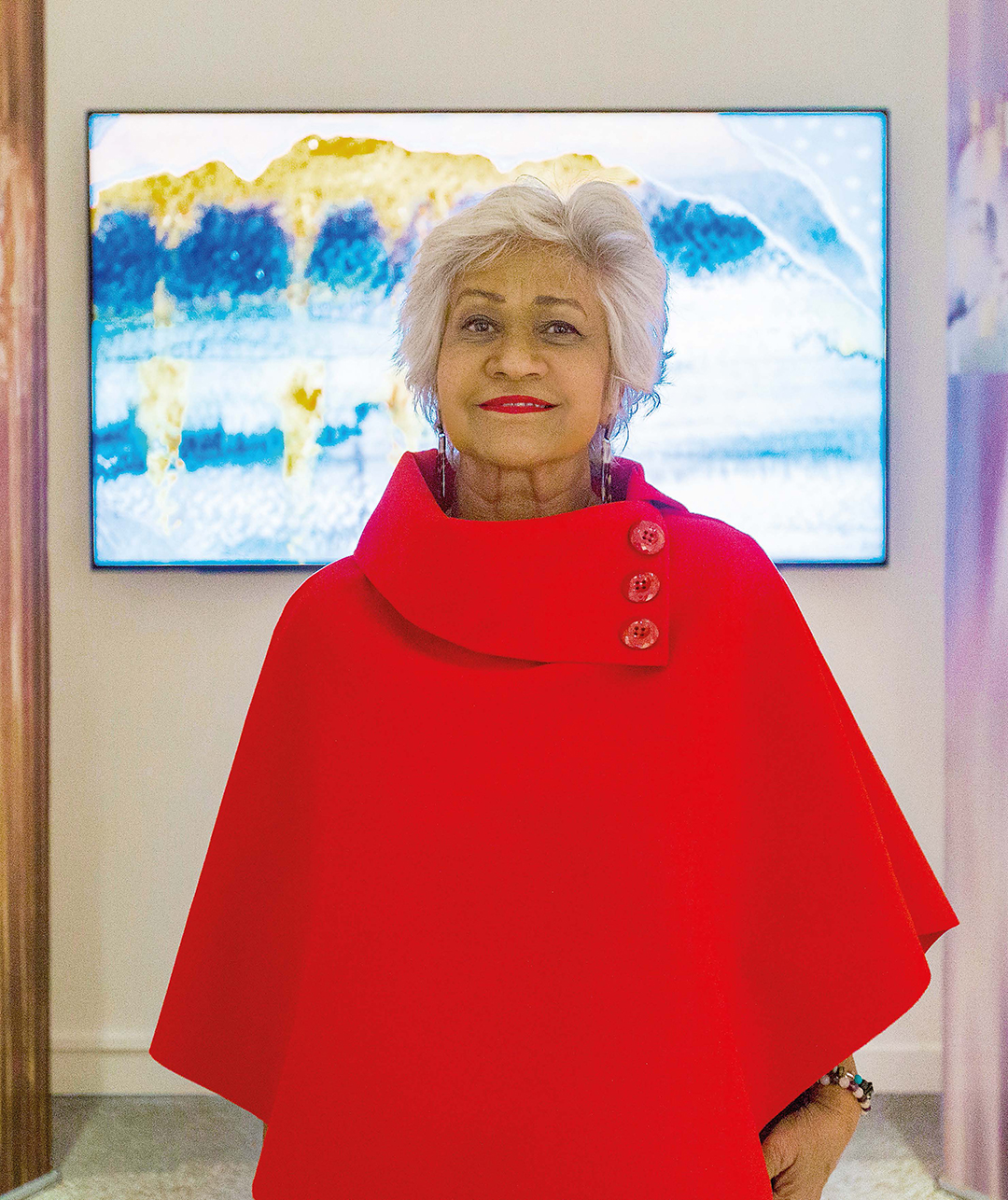 Before talking about your presence at the 58th Venice Biennale could you tell us how your interest in art began?
Before talking about your presence at the 58th Venice Biennale could you tell us how your interest in art began?
It’s always been my passion. According to my mother even as a baby I used to trace the embroidery patterns on the pillow cases. I wanted to do a Fine Arts degree but since they would rather I have gone to university they insisted that if I wanted to do art it must be design and so my degrees are in Textile Design. Art is for me a compulsion. It’s the dreaming, the thinking about it, sketching it out, planning it and the final physical act of painting that is the raison d’etre.
With regard to creating your work, how do you decide to start a new project and run to the end? Do you make a plan or only expect inspiration to set you on your path?
Describing one’s own particular creative process is difficult because it is in a sense intangible. It is a mix of or balance between being inspired by an
idea or an experience and in my case, a concern, which then pupates into something more formal which might be a loose plan. But a plan that needs to be kept flexible so that the art and process itself defines the journey. It’s a strange mix of emotion, intellect, an indefinable force, structure and a following of your feelings and visual fantasies within that form. My reading, my visual life, theatre, dance, drama, movies, opera and nature …poetry and music are key to my visual fantasy life, which drives the art making process.
I also write and make copious notes while an idea is in gestation and do lots of sketchbook work before I even start with an actual drawing and then finally the painting. I cannot create in a crowd nor with people… the aloneness and silence is key. There has to be inspiration or a kick starter but to take it through months of explorations and adventure one needs to plan to prepare and to be engaged with passion all the way through. It’s a lonely path because quite often no one else can really advise, criticize or help you on the path.
Being invited to represent Sri Lanka at the 58th Venice Biennale is a significant achievement for you. How do you view this?
I am both humbled and grateful to be invited by the curating team of the European Cultural Centre to include my work in their exhibition, Personal Structures: Identities at the Palazzo Bembo. The fact that it was a collateral exhibition of the Venice Biennale and would be a six month viewing period and likely to be seen by about 500,000 visitors convinced me to show my work. I also viewed it as an opportunity for Sri Lanka and for sharing my work on peaceful coexistence, diversity and unity and healing on an international scale at an event which Forbes calls the ‘Olympics’ of Art.
The last Sri Lankan presence at the Venice Biennale was over 60 years ago. Why do you think you were invited?
I have been told that it was the members of the ‘43 group that had represented Sri Lanka at the Venice Biennale many decades ago. My work which focuses exclusively on critical social issues of our time resonated with the curators, and the overall theme of the Biennale which was ‘May You Live In Interesting Times’…. encompassing the very turbulent times we inhabit globally. The works throughout many of the shows reflected these concerns. Receiving an invitation for a single Sri Lankan artist from a collateral exhibition curating team was of great significance to the many people who supported this venture, The John Keells Foundation and Cinnamon Life, Ceylon Tea, the National Lotteries Board, the Academy of Design, and Etihad Airways. This very complex operation could not have been remotely possible without their enthusiastic partnership. A few private individuals also helped make this chance and invitation a reality. I am deeply and completely indebted to all of them.
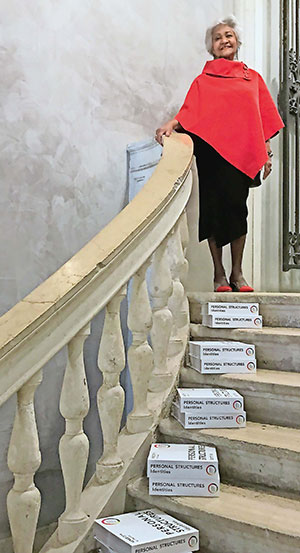 Your installation was displayed under the theme of Personal Structures: Identities. How would you define your artistic identity?
Your installation was displayed under the theme of Personal Structures: Identities. How would you define your artistic identity?
Identity is such an interesting word. The fact of being who or what a person or thing is. Perhaps that was one of the questions being addressed by Personal Structures: Identities. We are today seeking identity, belonging, nationhood and individual position when really perhaps what we should be reaching towards is a melting pot and fusion and interconnectedness and interdependence. The beauty is in the difference, inviting us to cherish our cultural commonality and embrace our differences.
The exhibition is our statement of hope to stimulate a more conscious thinking so that future generations have a chance to live as free global citizens. While my great love is pure paint, I have explored installation, which includes mixed and multi media, sculpture, video and performance.
What is the origin of work you presented at the Venice Biennale?
The works were as always exploratory and the adventure started in 2014 and went alongside the anxiety I felt due to the religious disturbances at the time in Sri Lanka which underpinned the fact that we were not really coming to terms with reconciliation and coming together after the years of conflict to find unity within the diversity that constitutes Sri Lanka.
I was in an unproductive and blocked period after the three recent exhibitions. In an attempt to shake off the inertia I started painting in a variety of forms and mediums, deconstructing, layering and fusing these unrelated mismatched paintings and found myself creating and yet trying to reach a harmony and cohesiveness while still retaining their own form. It was quite a challenging idea and I explored a variety of avenues to find varied combinations.
What does Kintsugi mean?
Kintsugi which means golden seams, is a Japanese word for the repair of porcelain and ceramics using gold enamel. The repair method celebrates the artifacts unique history by emphasizing its fractures and breaks instead of hiding or disguising them. Kintsugi often makes the repaired piece even more beautiful than the original, revitalizing it with new life.
It is related to the Japanese philosophy of Wabi-Sabi, which calls for seeing beauty in the flawed or imperfect, or indeed an accident, or a mistake. It examines the beauty of the broken and celebrates reconstruction and repair and the beauty in refreshing, renewing and recreating, and of course re-unification.
Can you explain the emotive dimension of your work?
My work is almost always inspired by my very emotional response to my existential concerns, to my anxiety for the state of the world and I hope it retains the centrality of that emotional presence through to the viewer of my work. Even when the work is pure paint, people seem to respond to it from the heart and that is where my work is essentially from, although an intellectual factor via science, statistics, development and political factors are strongly present. However in the video and installation works I attempt to bring in words, music, movement, performance and a variety of sensory elements to enhance the emotional quotient of the overall work.
I love all the sensory thrill of opera, and in the installation Kintsugi at The Biennale we have gone further as for the first time ever, I included olfactory art as a an aspect of the installation with the introduction of the scent of Cinnamon within the installation space.
It is an appeal to the sense of smell as a homage to the fact that for centuries Cinnamon would have traversed the Silk Route from ancient Ceylon to the great emporia of the City State of Venice.
The installation was dependent on strong light in one part of the room, low light in another, the scent of cinnamon wafting, the sound of a voice reciting the poem, interspersed with music while the eye moved from one aspect to another of a painting within which were layered birds in flight, the slow majestic movement of whales, a human-being quietly walking alone to echo the ideas of migration, movement, displacement, arrival and becoming were some of the central themes of Kintsugi.
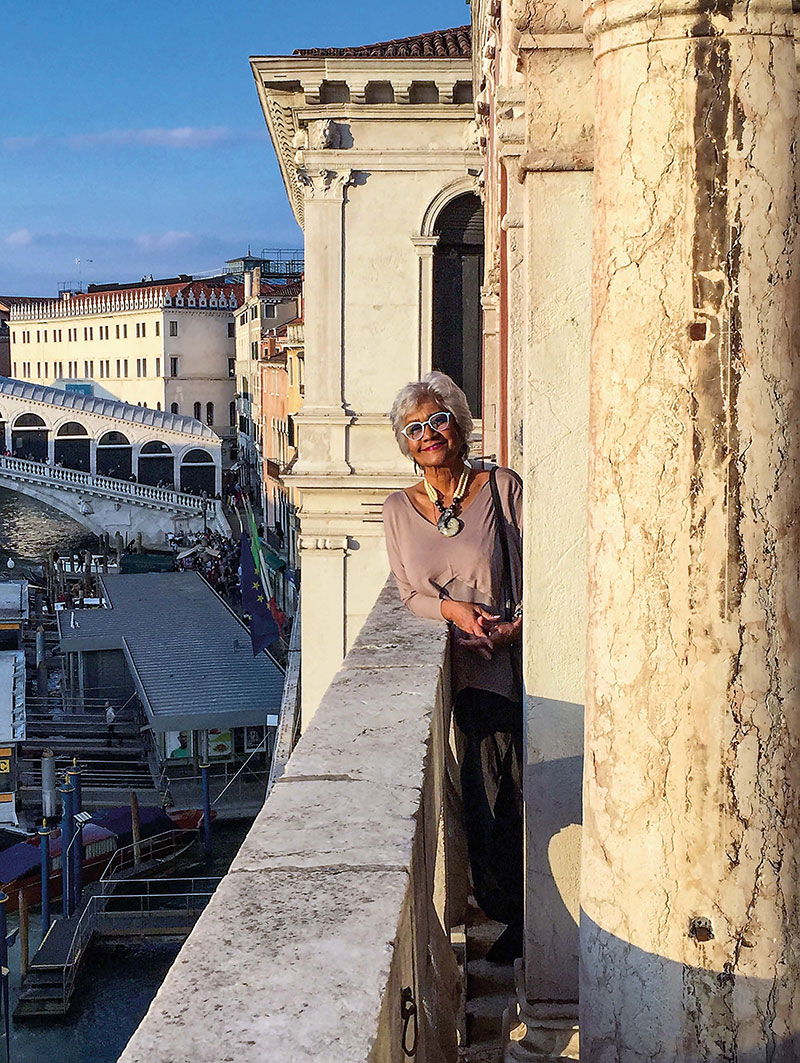 What thematic messages did your installation convey at the 58th Venice Biennale?
What thematic messages did your installation convey at the 58th Venice Biennale?
The art is a response to the normalization of unconscionable intolerance, hatred and bigotry spreading across the world since 2016. It is inspired by the migration and refugee crises unleashed by war, poverty and climate change. As the desperate seek security and survival, societies are wounded and people are broken physically, emotionally and psychologically.
We create and destroy in our search for immortality, never accepting that Anicca, the Buddhist concept of impermanence, is inevitable and unalterable. As our country emerges from many decades of brutal civil strife and ethnic conflict this installation is an invitation to us all to rise from the shards of our shattered lives, to rebuild, to reconnect, to unify and to heal.
Kintsugi reflects on the universality of man and our common humanity in the face of conflict, religious fervour and human insecurity and encourages us to accept the stewardship we share of our fragile planet.
You were in Venice for the opening ceremony. How was your segment at the exhibition received?
It was such an honour and pleasure to be there for the two opening nights of the Venice Biennale. It was both people and action packed and quite thrilling to see so many people view and examine my work which incorporated a video, an installation and a book.
The installation included laser cut mesh panels to imply fragility and impermanence with mirrors to suggest reflection and self awareness.
The accompanying looped 12 minute video incorporated the art, poetry and music. The book with both the art and poetry provided further explanation, and opportunity for a deeper examination of the visual ideas and of course the poetry.
The three interactive presentations of the concept requires concentrated viewing, and I was heartened and encouraged by the response from the viewers.
It will be interesting and instructive to note the comments that will I hope accrue over the next six months of viewers, since the Palazzo Bembo is admission free and expects 500,000 visitors.
Our world is at a critical juncture with regards to environment and peace. How do you think your art can influence those two important aspects?
At this moment in time it seems crucial that we all focus ever more acutely on the very real threat to existence we face universally. Ralph Rugoff, the Biennale curator opined that the title ‘May You Live In Interesting Times’ which is a reference to our era marked by crisis, riots and ‘alternative’ facts, was about defining the theme which was about the ambivalent potential of our crisis ridden time and rethinking the purpose of art in this context.
I am not at all sure that my art has ever or will make any difference but it is what I have to do, it is what I do and I know art is emotional and appeals to the heart. It is only the heart that can create the change.. Generosity, compassion and interdependence….. truly understanding and feeling and seeing each other, and knowing that you and I are one….. I cannot exist without you.
Critics have said that the 58th Venice Biennale is very political. How do you think your work contributed to that thinking?
It was powerfully and engagingly political with every aspect of mankind’s struggle with himself portrayed, unpacked and examined deeply. The form of the work varied and included many mediums from video, sculpture, soundscapes, pure paint and performance, even apps were art forms. The works were emotionally charged and deeply researched statements positing a dystopian view of the world, and a cry for action. The art though was both a hope for change and a warning. As ever, the artist always leads the way, specifically because he is the outsider, because he is the truth seer, because he must be the truth teller.
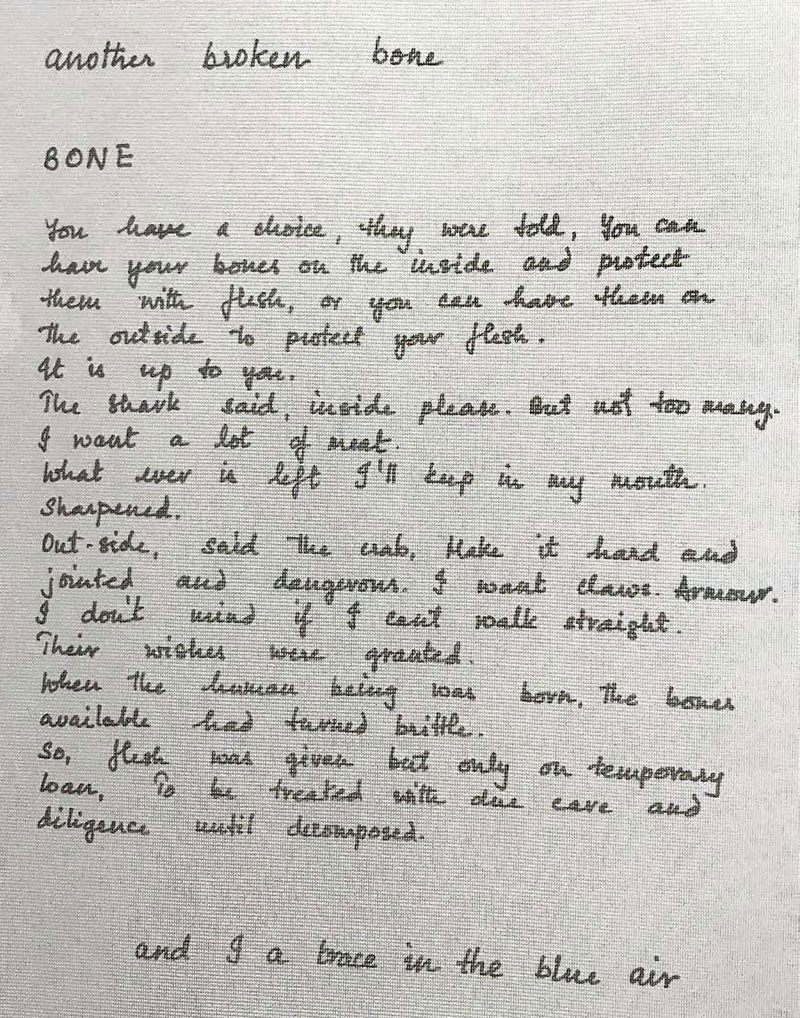
 It was a collaboration of sorts. Who did you collaborate with?
It was a collaboration of sorts. Who did you collaborate with?
I worked on the paintings for over two years and while I never usually show my work to anyone I had a childhood friend Romesh Gunesekera visiting with me, and I shared it with him and then when he responded so positively to it I simply wondered aloud if he felt he could write a paragraph, a phrase or some prose for it if it resonated so strongly with him! It was never planned, it just evolved, and in time emerged these amazing set of poems which echo the format of the work
as each poem is seemingly unrelated and yet finally come together to create one final all encompassing, all inclusive poem. The poetry was written specifically for the art and created out of shards and fragments, and draw on memory and myth. They engage with the world of isolation, conflict and displacement, and explore the challenges of reconciliation, healing and harmony, as well as the possibility of unity within diversity.
The music was also composed for the art and the collaboration evolved just as casually and seamlessly as I met Sharon Smith in Los Angeles and we immediately connected and in her charming house in Venice Beach listening to her compositions I said I would so love to do a video of my art, your music and Romesh’s words, and then we forgot about it. However she too was fired by the idea and paintings and went on to create this haunting work for Kintsugi.
There were many others who were involved with finding solutions for Kintsugi as well, and I love these collaborative interactions
What was the entire experience like at the Venice Biennale?
It is indescribable. The city is ancient, hauntingly beautiful and holds the spirit of a place of trading of centuries and a repository of great art and architecture. If that wasn’t enough of a thrill, the water and living by water and travelling everywhere by it makes everything an event and adventure. Then on top of it all the thought that Venice Biennale has been existent for over a century with artists coming together is nothing short of fabulous.
As an exhibiting artist it was scary and intimidating and yet thrilling to be a part of such a major and huge exhibition. I suppose in layman’s terms it is like an expo. Certainly one feels exposed!!! It was humbling to see my name there with Sri Lanka next to it and knowing that in some small way I could contribute to our country and my concerns for the planet in a forum of the highest prestige.
Were you able to take some time out and view the rest of the exhibits which were scattered around Venice?
We certainly did experience the Arsenale and Giardini and I wish I could have seen more of the collateral exhibitions and individual works which critics have also applauded. It is the premier art event in the world, and the quantity and quality of art from across the world is awesome. It is on for six months until November and I wonder if even six months would be adequate to digest or even see it all. However, even just a taste is thrilling. Some of the pavilions were disappointing and without any drama but yet others were enchanting. I was particularly excited by the sound work of Tomas Saraceno, wreck of the migrant ship, Sun Yuan and Peng Yu’s Dear, the Emperor’s chair and whip, and Jitish Kallat’s subtle Gandhi’s letter to Hitler in the Indian pavilion. As apposite now as then. The Ghana pavilion designed by architect David Adjaye, the Russian pavilion which left one longing to return to the Hermitage, and one is left longing to return to Venice for more.
What is next for you after the Venice Biennale 2019?
A moment of respite would be nice and I am never very sure about the future and future plans as they always seem to change, but I do look forward to launching in Colombo the monograph of my fifty years in art and design which already launched in March in London.
It has over 250 pages of images and the work of five writers and includes notes and chronology, and I wish it could have been in Colombo soon after London, but Venice and politics disrupted our plans. We also hope to launch it in Sydney, with my gallerist, in the autumn.
There are other commitments and commissions awaiting me but what I am really longing for is a quiet daily life back in the silence of the studio so that I can paint, and paint, and paint.

